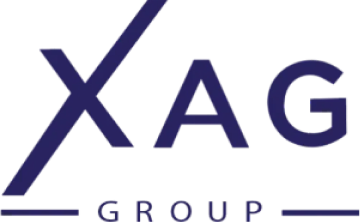The Federal Reserve’s latest meeting on September 17th delivered a decision many commercial real estate professionals had hoped for: that being a 50-point reduction in the federal rates. As the economy adapts to shifting market dynamics, the Fed has responded with rate cuts to mitigate economic slowdowns, stabilize inflation, and boost growth. This move has profound implications for the commercial real estate (CRE) sector, with potential opportunities and challenges arising for investors, developers, and tenants alike.

One of the most immediate and tangible effects of a Federal Reserve rate cut is a reduction in borrowing costs. For commercial real estate investors and developers, this could mean access to cheaper debt, leading to more favorable terms on loans for purchasing or developing properties. With the cost of capital decreasing, there is a higher likelihood of seeing increased activity in property acquisitions, refinancing, and new developments. Lower interest rates might also encourage businesses and developers to embark on larger, more ambitious projects that may have been sidelined due to previously high financing costs. For example, developments that were projected to have thin profit margins could now become more financially viable.
For property owners, especially those with variable-rate debt, a drop in interest rates can translate to reduced mortgage payments. This reduction can immediately improve cash flow, enabling owners to reinvest in their properties, increase maintenance, or focus on expansion. Additionally, more favorable refinancing opportunities could free up capital that can be utilized for further investment or operating needs. Enhanced cash flow also benefits tenants. If property owners pass on some of the savings to tenants through lower lease rates, this could lead to increased occupancy, particularly for small businesses or startups that are sensitive to rental costs.
With borrowing becoming less expensive, more investors may seek to purchase commercial real estate assets, driving up demand in key markets. As demand rises, particularly in sought-after areas like urban cores or high-growth secondary markets, property values may appreciate, especially for stable, income-producing properties. That said, while prime markets are likely to see increased interest, there’s also potential for heightened competition. As investors chase higher yields, we may see cap rate compression, which can make it harder for buyers to find bargains despite the lower borrowing costs.

However, rate cuts aren’t without risks. One potential downside is inflation. If borrowing becomes too cheap, it could lead to overheating in some sectors of the economy, including commercial real estate. Rising construction costs or increased competition for assets could squeeze profit margins, particularly if rental rates don’t rise at the same pace as inflation. Moreover, while rate cuts can stimulate activity in the short term, they are often a response to broader economic concerns, such as a slowing economy or weak growth. As such, investors should remain cautious about the overall health of the economy, as a slowdown could dampen demand for commercial spaces in the long run.
The Federal Reserve’s recent decision to cut interest rates is likely to inject fresh energy into the commercial real estate market. For investors, developers, and business owners, this presents an opportunity to capitalize on lower borrowing costs, enhanced cash flows, and rising demand for commercial space. However, it’s essential to approach these opportunities with a strategic eye on the broader economic landscape, keeping an eye on inflation risks and potential economic slowdowns.
At XAG Group, our team took the initiative to enter Houston’s real estate market early, allowing us to leverage property appreciation and enjoy the full advantages of being among the first in new development areas. This proactive approach has positioned us to capitalize on long-term growth while benefiting from rising market values. Our early presence also enhances our ability to navigate market shifts, such as interest rate changes, ensuring we maintain a strategic edge in Houston’s evolving real estate landscape.

Commentaires